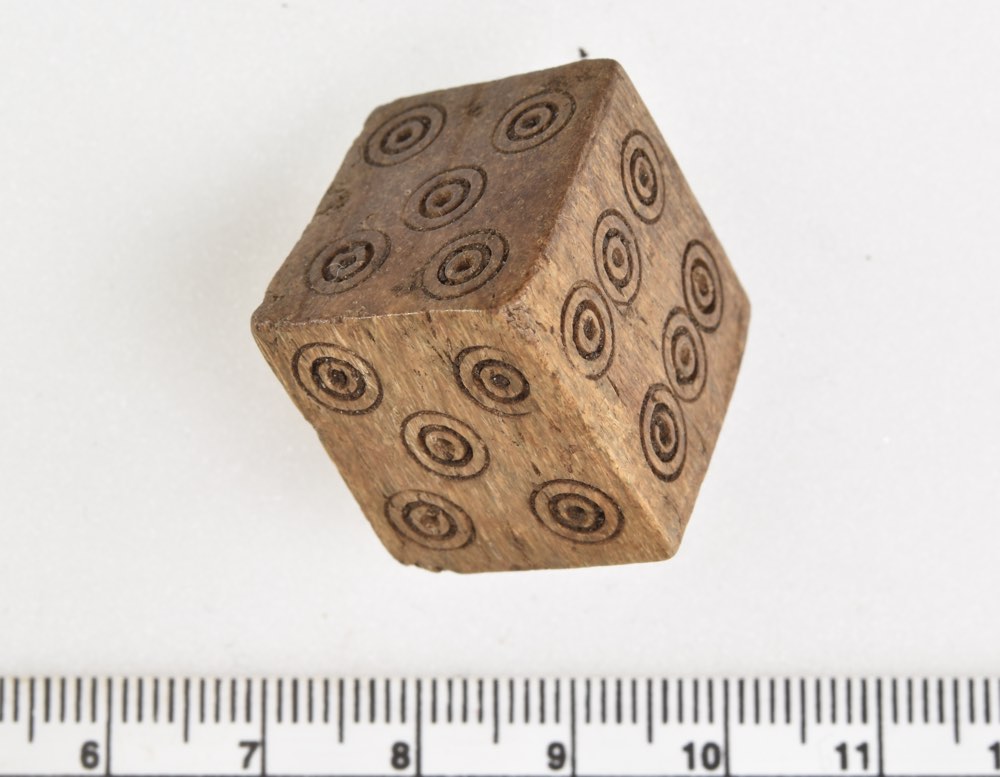That's Cheating! Medieval Dice with No 1 or 2 Found on Street in Norway

Editor's Note: This story was updated at 12:20 p.m. E.T. on Wednesday, April 12
A 600-year-old wooden dice that seems to have been specially designed for cheating during gambling was recently discovered in Norway.
The "cheating dice" was found beside a medieval-era street during archaeological excavations in the Vågsbunnen district in Bergen.
"Over 30 dice from the Middle Ages have been found in Bergen over the years so the discovery of a dice in itself is not very surprising. This dice is, on the other hand, special," wrote a team of archaeologists from the Norwegian Institute for Cultural Heritage Research on its website. [Understanding the 10 Most Destructive Human Behaviors]
A normal dice has only one number (usually represented by a dot) on each of its six sides, ranging from 1 to 6. But not this dice.
"The dice from Vågsbunnen has two fives and two fours, instead of the numbers one and two. It is therefore very likely that this has been used to cheat in games," the archaeologists wrote.
Another possibility is that this particular dice was meant for a game that used a dice without a 1 or 2, but rather two 4s and two 5s. However, it's more likely that it was used for cheating, archaeologists say.
Get the world’s most fascinating discoveries delivered straight to your inbox.
How exactly the cheating would have worked is unclear. It's possible that the gambling involved a game where rolling a 4 or 5 was favorable, but a 1 or 2 was unlucky.
While betting was banned in Bergen in 1276, that didn't stop people from gambling, archaeologists say. Gambling with dice was a matter of pure luck, and a dice like this could have helped someone win games — that is, until they were caught said Ingrid Rekkavik, an archaeologist with the Norwegian Institute for Cultural Heritage Research, in a blog post written in Norwegian.
Running out of luck
The dice was found close to a wooden street that dates to the 1400s, said Per Christian Underhaug, an archaeologist fro the Norwegian Institute for Cultural Heritage Research, who is the project manager for the excavations. There were many inns and pubs in the area, so it's likely that gambling could have taken place there.
It's possible that someone was catching on to the cheater, and they threw away that one dice in order to avoid being caught, Rekkavik wrote. Another possibility is that the cheater was caught red-handed, and an angry opponent tossed it onto the street. How the cheater would have been handled if caught is unknown — it's possible that their cheating led to a brawl, said Rekkavik.
Editor's Note: This story was updated to correct the affiliation of Per Christian Underhaug. The first picture caption was also corrected; the picture shows two 5s, not two 4s.
Originally published on Live Science.

Owen Jarus is a regular contributor to Live Science who writes about archaeology and humans' past. He has also written for The Independent (UK), The Canadian Press (CP) and The Associated Press (AP), among others. Owen has a bachelor of arts degree from the University of Toronto and a journalism degree from Ryerson University.



